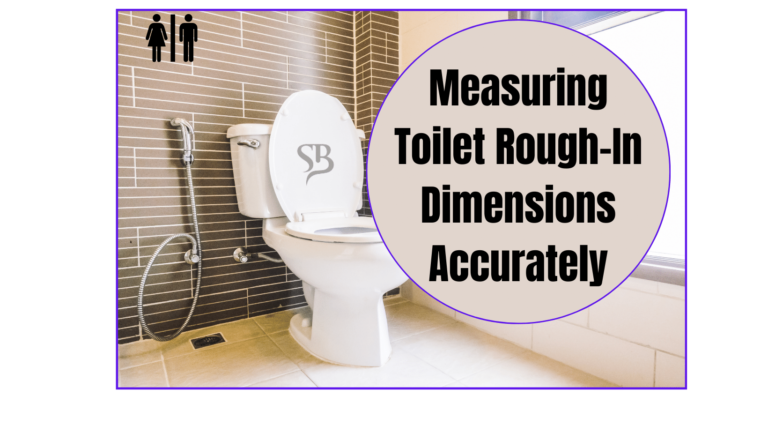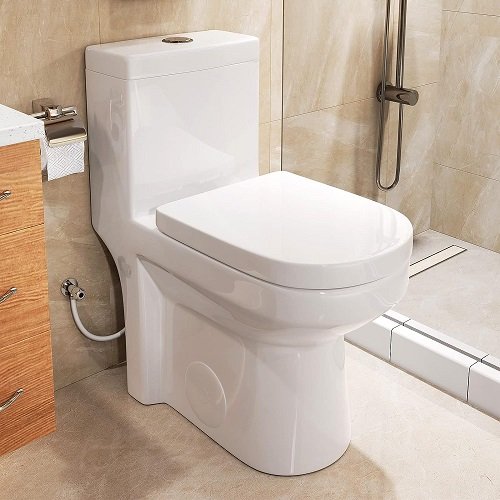A toilet flange is an essential component that connects the toilet to the drainage system. It is a ring-shaped device that is typically installed on top of the sewer pipe to create a seal that prevents waste from leaking.
An offset toilet flange is a special type of flange that is designed for use in situations where the toilet cannot be installed directly above the sewer pipe. Instead, it is offset to one side, allowing the toilet to be installed in a more convenient location.
While an offset toilet flange can be useful in some situations, it can also present a number of problems that need to be addressed.
In this article, we will discuss the purpose of an offset toilet flange, common problems that can occur, how to fix them, the pros and cons of using an offset toilet flange, and how to install one.
What Is The Use Of An Offset Toilet Flange?
In most cases, an offset toilet flange is designed to allow a toilet to be installed in a location that is not directly above the sewer pipe.
In some cases, this may be due to the location of the pipes in the floor or walls of the building.
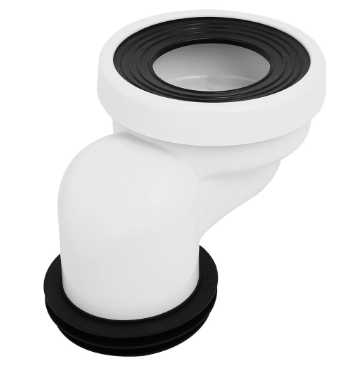
In other cases, it may be necessary to install the toilet in a specific location for reasons of convenience or accessibility.
Regardless of the reason, an offset toilet flange provides a solution that allows the toilet to be installed without having to relocate the sewer pipes.
Also read: Remodeling Your Bathroom: Navigating the Permits Conundrum
5 Common Offset Toilet Flange Problems and How to Fix Them?
While an offset toilet flange can be a useful solution, it can also present a number of problems that need to be addressed.
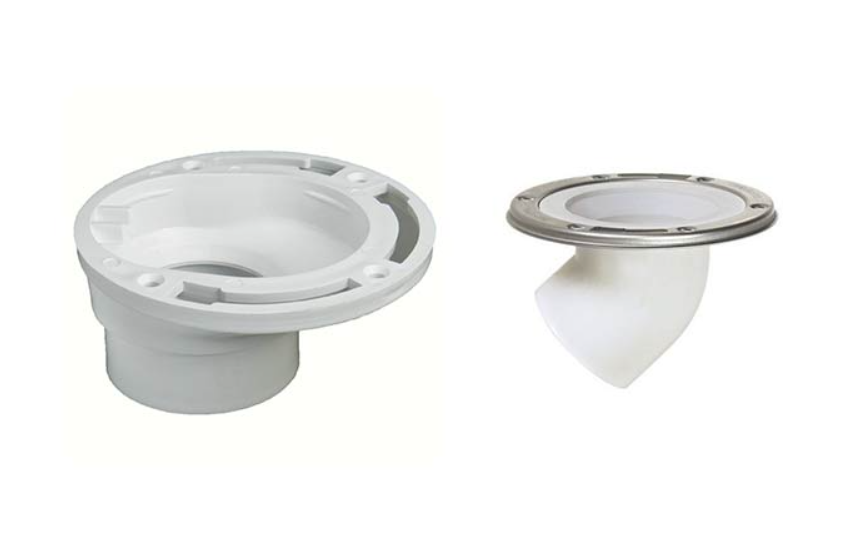
Here are five common offset toilet flange problems and how to fix them:
Leaks
One of the most common problems with offset toilet flanges is leaks. This can occur when the seal between the toilet and the flange is not tight, allowing water to escape. To fix this problem, you will need to remove the toilet and the flange and then reinstall them, ensuring that the seal is tight. It may also be necessary to replace the wax ring that seals the toilet to the flange.
Poor alignment
Another common problem with offset toilet flanges is poor alignment. This can occur when the flange is not properly installed, causing the toilet to be tilted or uneven. To fix this problem, you will need to remove the toilet and the flange and then reinstall them, ensuring that the flange is properly aligned with the sewer pipe.
Also read: Toilet Water Rising When Flushed: How to Fix
Height issues
Offset toilet flanges can also present height issues. If the flange is not installed at the proper height, the toilet may be too high or too low. This can be fixed by adjusting the height of the flange or by using an extension kit to raise or lower the toilet.
Breakage
Offset toilet flanges can also break or crack over time, particularly if they are made of plastic.
If this happens, you will need to replace the flange with a new one. It is important to choose a high-quality flange made of durable materials to avoid this problem in the future.
Odors
Finally, offset toilet flanges can sometimes cause odors to escape into the bathroom.
This can occur when the wax ring is not properly installed or when there is a problem with the ventilation system.
To fix this problem, you will need to remove the toilet and the flange and then reinstall them, ensuring that the wax ring is properly seated.
You may also need to check the ventilation system to ensure that it is functioning properly.
Also read: No More Struggle: A Guide to Effortless Toilet Bolt Caps Removal
Advantages And Disadvantages Of Offset Toilet Flanges
While offset toilet flanges can be a useful solution in some situations, they also have their pros and cons.
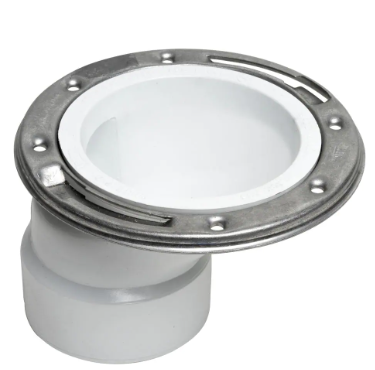
Here are some of the pros and cons of using an offset toilet flange:
Advantages
Allows for flexibility in toilet placement
An offset toilet flange allows for flexibility in toilet placement, which can be especially useful in bathroom remodels or renovations.
Can save time and money
If the sewer pipes are already installed in a specific location, installing an offset toilet flange can save time and money by avoiding the need to relocate the pipes.
Can improve accessibility
An offset toilet flange can allow for a toilet to be installed in a more accessible location, such as in a wheelchair accessible bathroom.
Also read: How To Install A Saniflo Toilet
Disadvantages
Requires proper installation
An offset toilet flange must be installed properly to avoid leaks and other problems. This may require the assistance of a professional plumber.
Can be prone to leaks
If not installed properly or if the seal between the toilet and flange is not tight, an offset toilet flange can be prone to leaks.
May require additional parts or accessories
Depending on the specific situation, an offset toilet flange may require additional parts or accessories, such as extension kits or special wax rings.
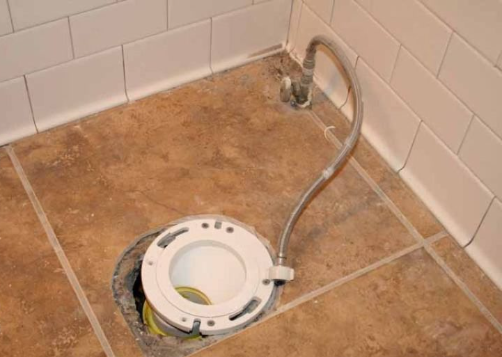
Also read: Round Toilet Seat Too Small? Discover Effective Solutions Here
How To Install An Offset Toilet Flange
Installing an offset toilet flange requires some plumbing knowledge and experience. Here are the general steps to follow:
- Determine the location of the sewer pipe and the desired location of the toilet.
- Use a hole saw to cut a hole in the floor at the desired location for the flange.
- Install the flange by inserting the flange into the hole and securing it to the floor with screws or bolts.
- Attach the toilet to the flange by placing the wax ring over the flange and then lowering the toilet onto the ring.
- Secure the toilet to the floor with bolts or screws.
- Test the toilet unit for leaks by flushing it and checking for water around the toilet base.
If you are unsure about how to install an offset toilet flange, it is best to consult with a professional plumber.
Also read: How to Fix Common Saniflo Toilet Problems
Conclusion
An offset toilet flange can be a useful solution in situations where a toilet cannot be installed directly above the sewer pipe.
However, it can also present a number of problems that need to be addressed.
Common problems with offset toilet flanges include leaks, poor alignment, height issues, breakage, and odors.
To fix these problems, it may be necessary to remove the toilet and flange and reinstall them properly. Offset toilet flanges have their pros and cons, and require proper installation to avoid problems.
If you are unsure about how to install an offset toilet flange, it is best to consult with a professional plumber.
Also read: How to Remove Harpic Stains from Toilet Seats
What is the purpose of an offset toilet flange?
An offset toilet flange is designed to allow the installation of a toilet in a location that is not directly above the sewer pipe. This can be necessary due to the positioning of pipes in the building’s floor or walls or for reasons of convenience or accessibility.
What are common problems with offset toilet flanges and how can they be fixed?
Common problems include leaks, poor alignment, height issues, breakage, and odors. Leaks can be fixed by reinstalling the toilet and flange with a tight seal. Poor alignment requires reinstallation to ensure proper alignment. Height issues can be addressed by adjusting the flange or using an extension kit. Breakage may necessitate replacing the flange, and odors can be fixed by ensuring proper installation of the wax ring and checking the ventilation system.


